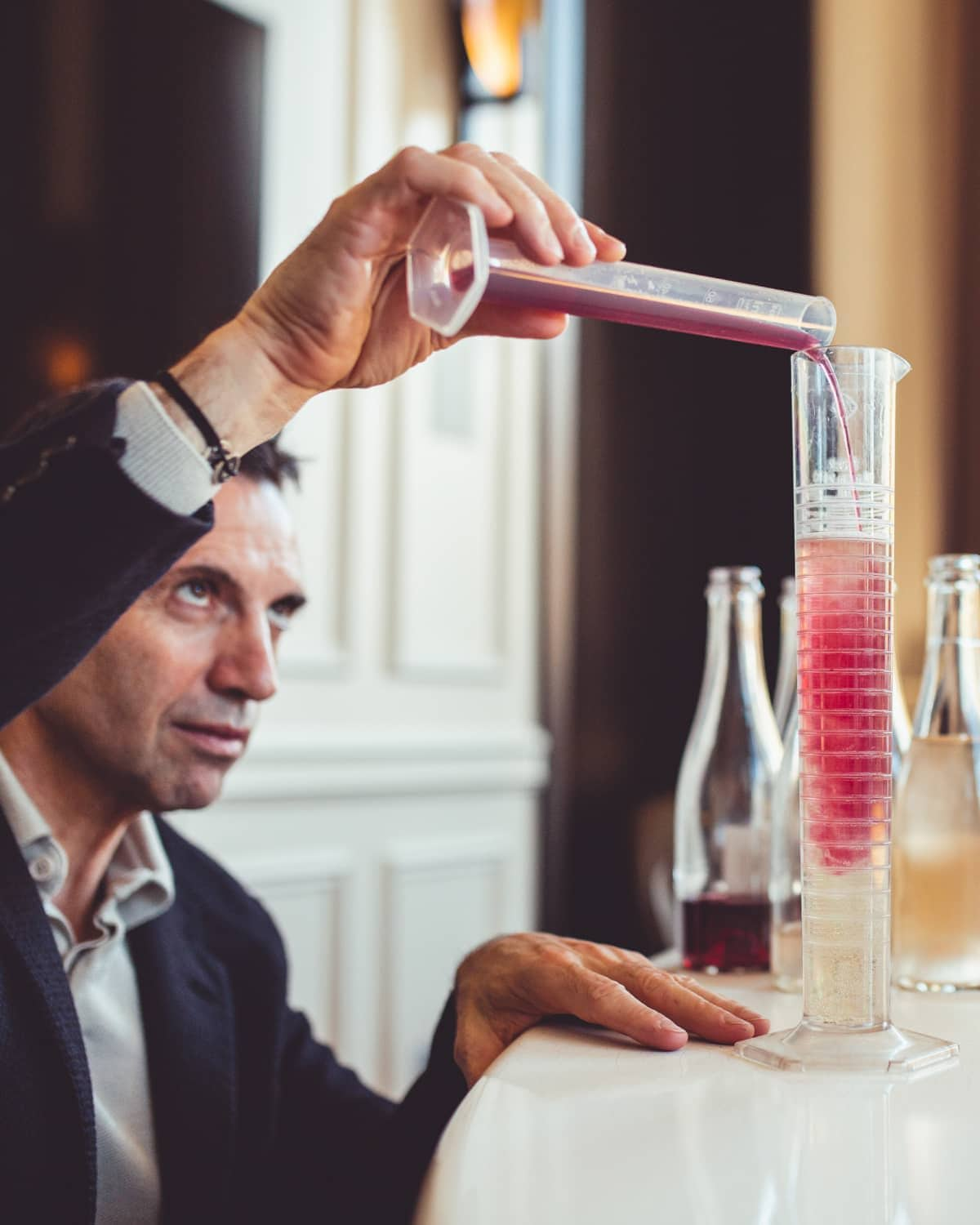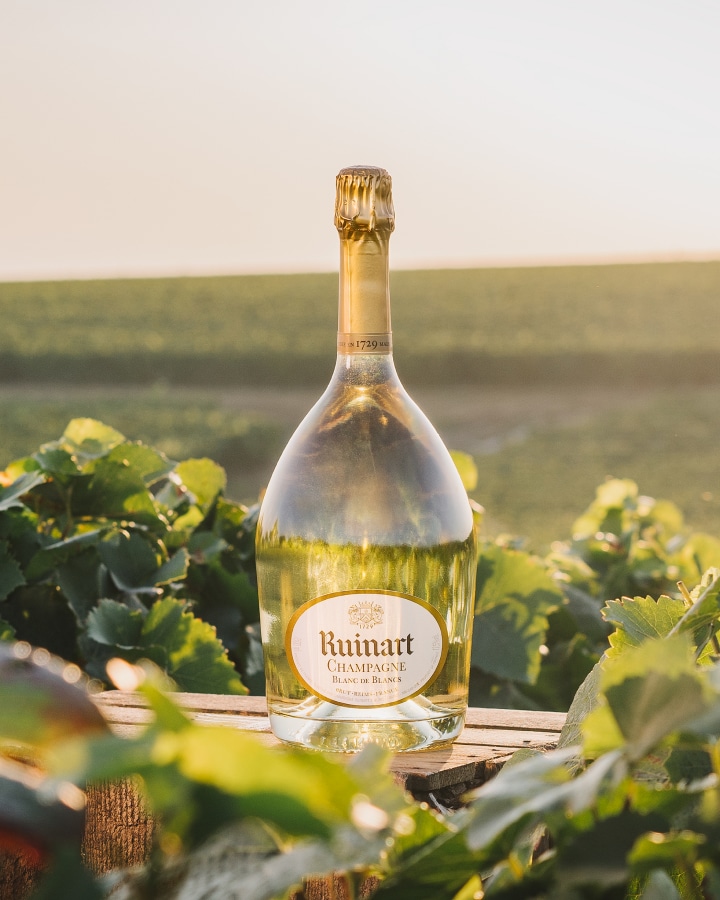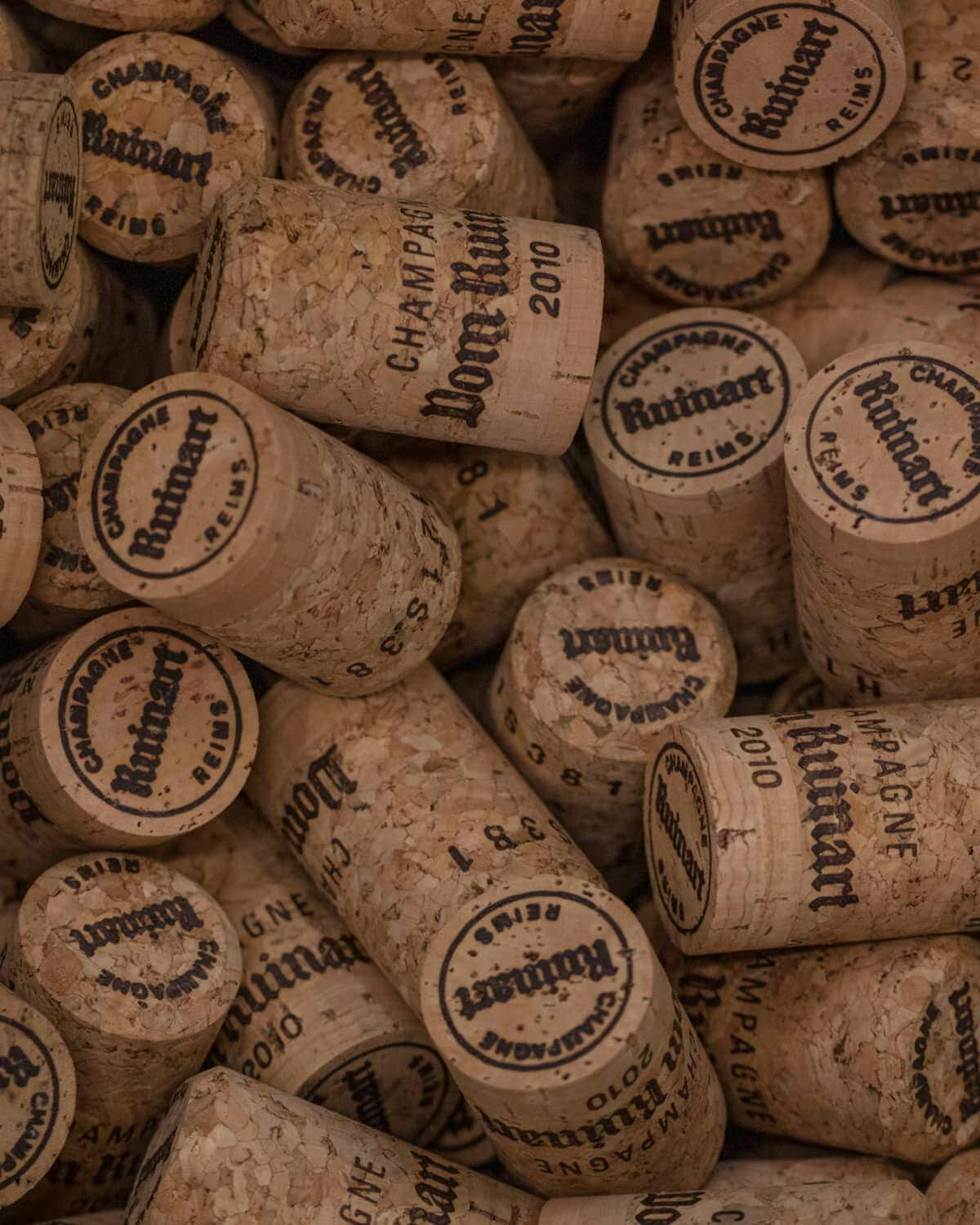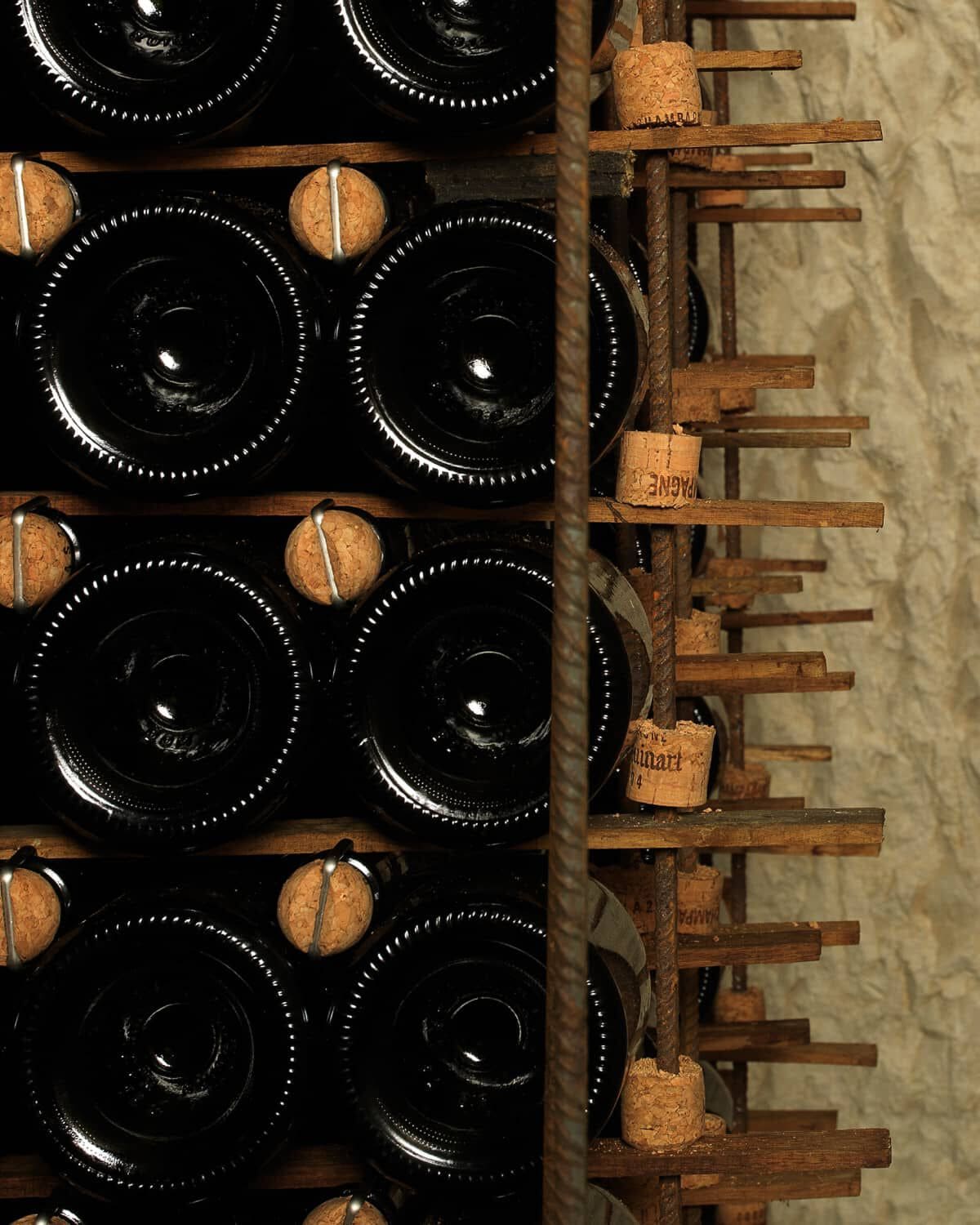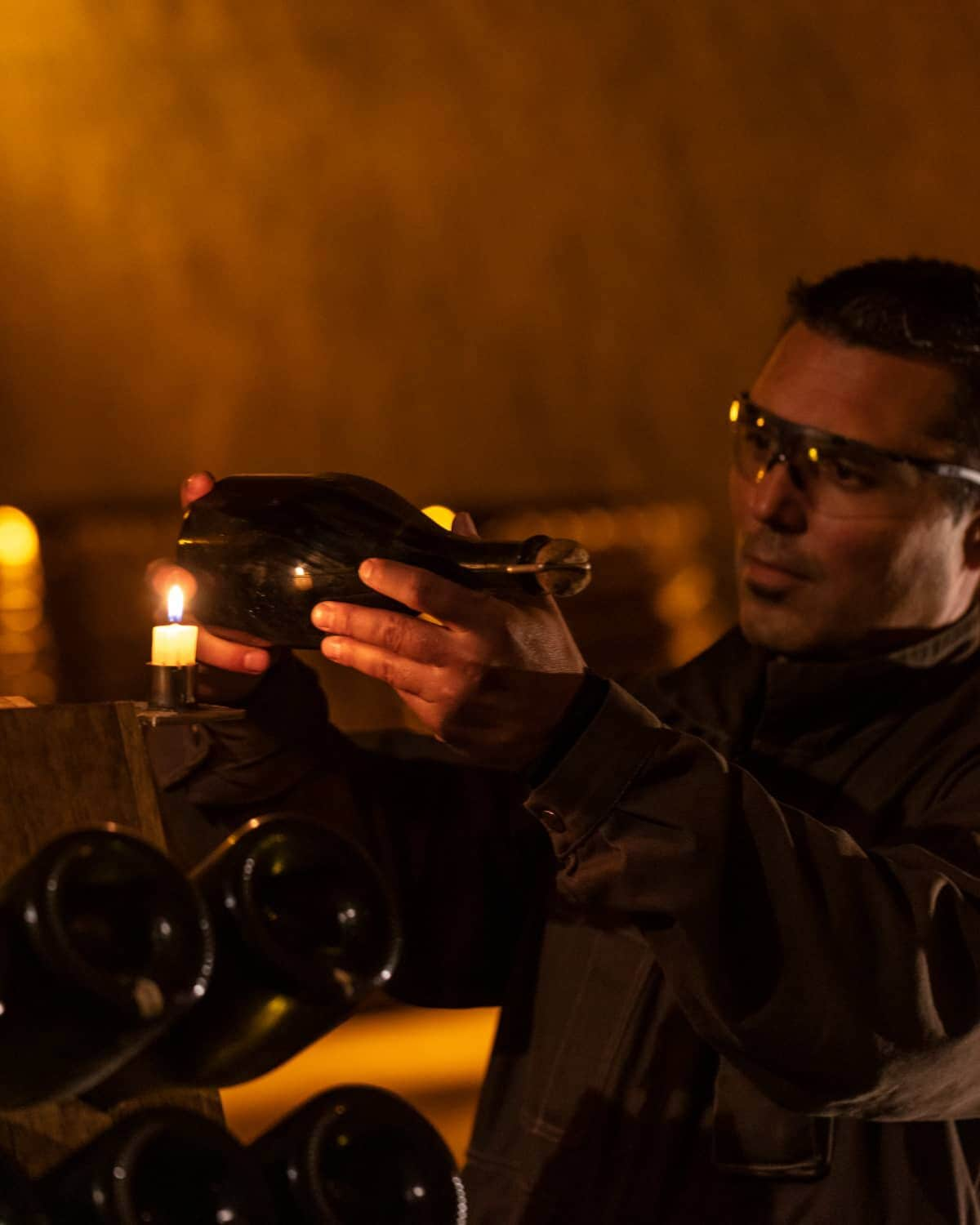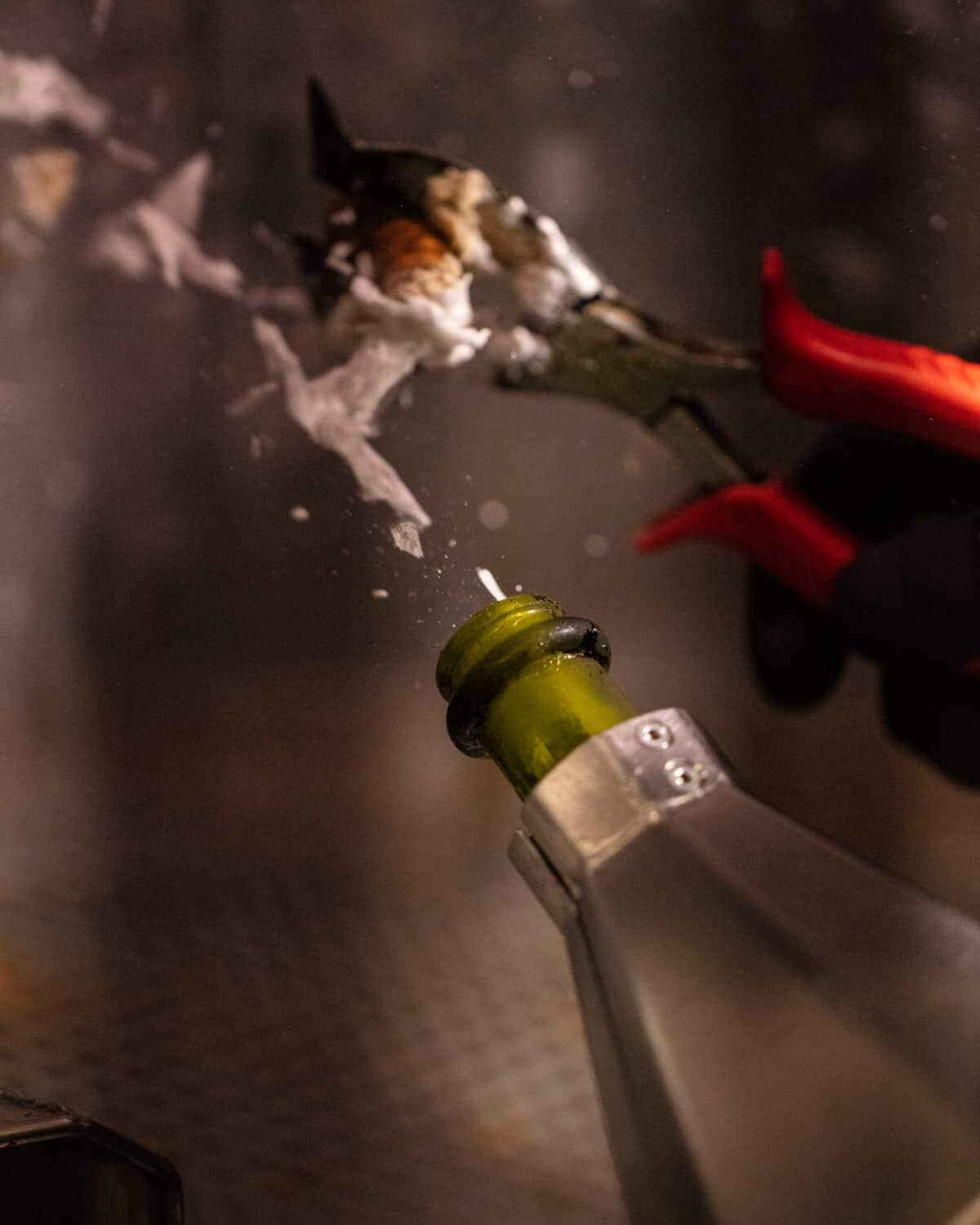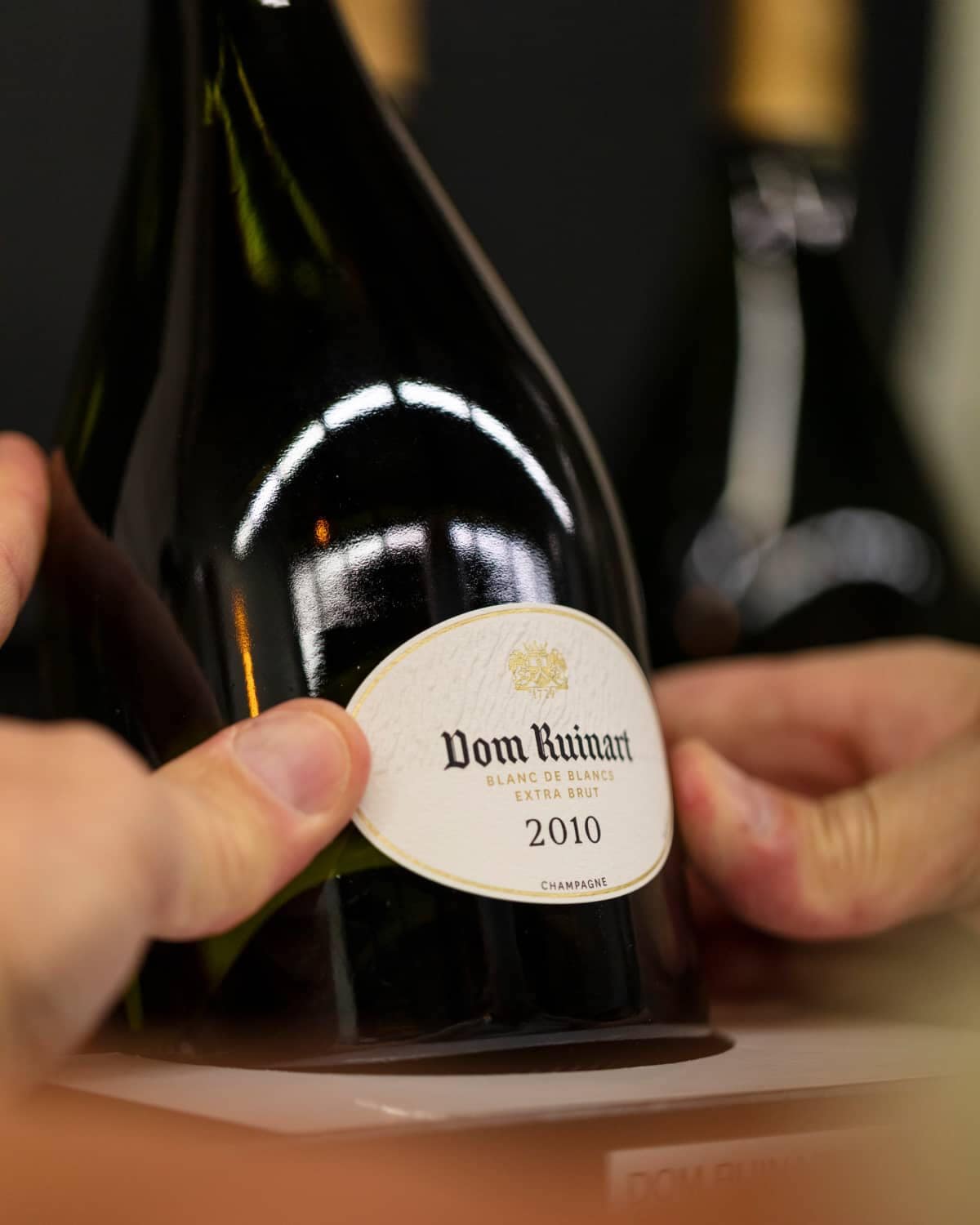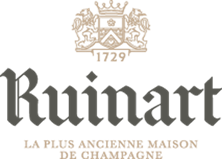
Ruinart supports the moderate consumption of wine and spirits through Moët Hennessy, a member of Wine in Moderation.
PLEASE DRINK RESPONSIBLY

Ruinart supports the moderate consumption of wine and spirits through Moët Hennessy, a member of Wine in Moderation.
PLEASE DRINK RESPONSIBLY
The must is then transferred to thermo-regulated stainless steel vats within which all the freshness of the grape juice and the subtlety of its aromas are preserved. Here the alcoholic fermentation begins, at low temperatures. After this first fermentation, which produces still, quiet wines, the second, or “malolactic”, fermentation reduces the wines’ acidity and gives them greater subtlety.
During blending, the Cellar Master, Frederic Panaïotis, and his team are guided by their expertise and intuition. They pay attention to the visual, olfactory, and gustatory qualities that demonstrate the permanence of the "Ruinart taste" that has lasted over time. The Cellar Master tastes each clear wine and gives expression to their nuances through blendings that he plans over time. The aim is to achieve an ideal, balanced, and harmonious blend that is the perfect expression of the Ruinart Taste.
The unique shape of its bottle is a tribute to the historic bottles of the eighteenth century. “Luncheon with Oysters”, a famous painting by Jean-François de Troy, completed six years after the Maison Ruinart's founding, is also the oldest known representation of the drinking of champagne. The shape of the bottles seen in the painting is identical to the bottle shape adopted by Maison Ruinart.
For the Dom Ruinart cuvée, the entreillage takes place on lattes, or wooden boards, as part of an ancestral know-how. Bottles from the Dom Ruinart cuvées are arranged on wooden boards in accordance with the ancestral technique known as entreillage, or stacking. They will develop their aromatic richness during a slow ageing process of at least eight years for a Dom Ruinart and several additional years for a Dom Ruinart La Réserve, followed by a further perfection process over a number of years.
The delicate chardonnay will display its richness after a slow maturation in the coolness of the Crayères (our chalk cellars): up to 3 years for non-vintage wines, and 9 to 10 years for a Dom Ruinart. The temperature within the cellars is kept between 10-12°C all year round, with a perfect level of humidity, no movement, and ambient darkness offering the best ageing conditions for the wine. To enter into the chalk quarries that act as Maison Ruinart’s cellars is to discover the beating heart of the Champagne region and its wines, penetrating its very soul and its best-kept secrets.
After the visual assessment of the wines begins the mechanical process of "riddling", which slowly turns the bottles from horizontal to vertical, leading the sediment to collect in the bottle's neck. This step is carried out using gyropalettes, an extension of man's influence, which reproduce the ancestral movements, all the while guaranteeing a constant and perfect level of quality. For the most prestigious cuvées, the bottles are “riddled” by hand. Each bottle is turned once a day in a sharp and regular movement of a quarter, a sixth or an eighth of a turn.
The artisanal approach continues as the bottles are disgorged by hand in a process to remove sediment. For most cuvées, this is carried out with great precision via the use of a mechanical circuit. Since March 2017, as part of its commitment to sustainable development, Maison Ruinart has equipped its production site in Reims with a new disgorging line to limit its environmental impact. In the case of exceptional cuvées, disgorging takes place by hand or individually in the presence of the Cellar Master and his team. They taste each bottle that is disgorged, thus carrying out a final quality check.
The bottles are than hand-labelled and numbered, finally ready to unveil an elegant, surprising blend of luscious texture and striking freshness. Each bottle is fitted with a back label displaying all the information concerning its composition and the history of its time spent in the cellars. The bottles are thus ready to reveal their rare density of texture and striking freshness.
